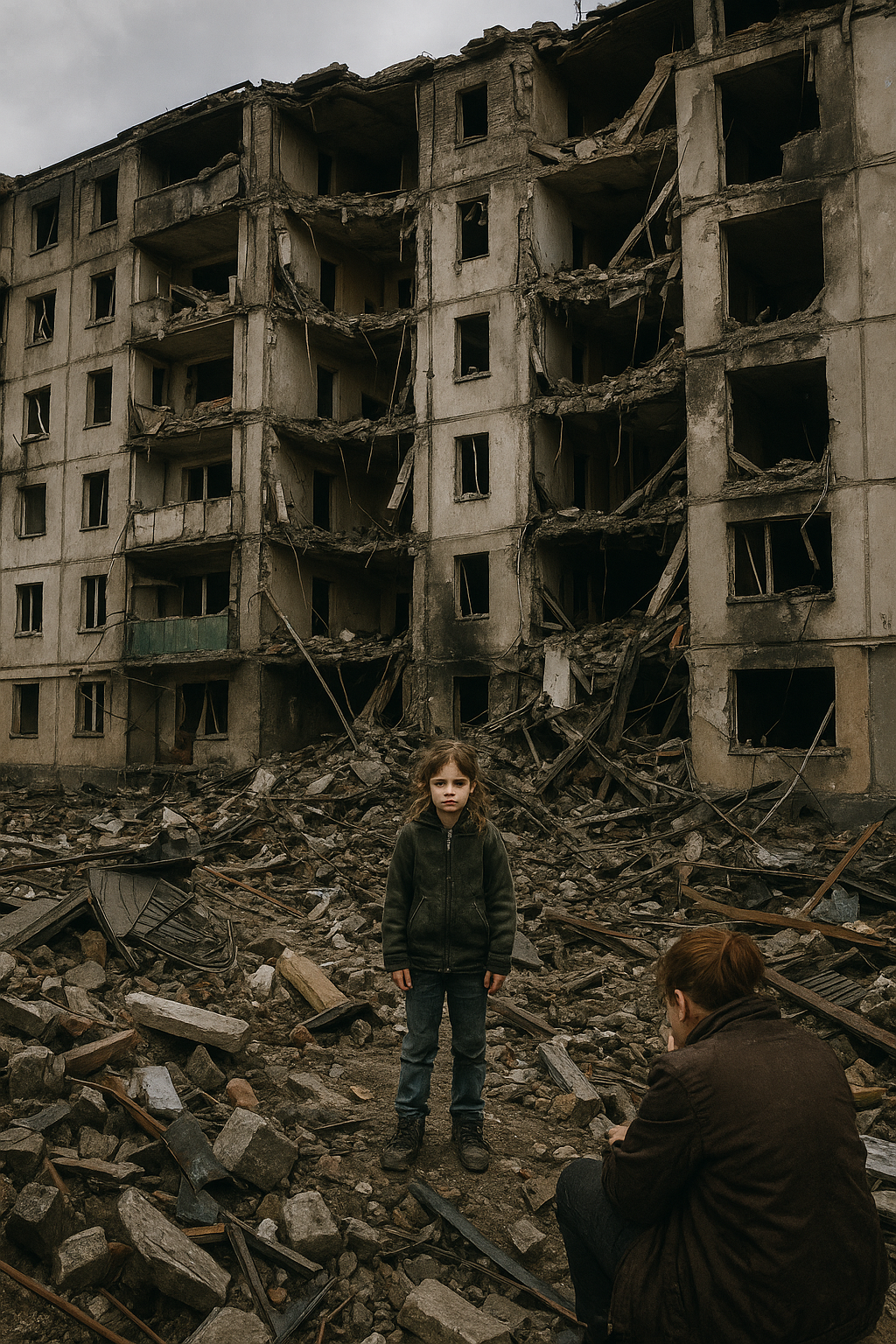UNICEF Warns 70% of Ukrainian Children Lack Essentials Amid War Fallout
The report underscores a dramatic rise in material deprivation among children, up from 18 percent in 2021 — before the full-scale invasion in February 2022.

- Country:
- Ukraine
More than three years since the escalation of war in Ukraine, 70 percent of the country’s children — an estimated 3.5 million — now live without consistent access to basic goods and services, according to alarming new data released by the United Nations Children’s Fund (UNICEF).
The report underscores a dramatic rise in material deprivation among children, up from 18 percent in 2021 — before the full-scale invasion in February 2022. This marks an over 280 percent increase, signaling an urgent need for both immediate humanitarian aid and long-term investment in Ukraine’s social infrastructure.
What Is Material Deprivation and Why It Matters
Material deprivation refers to the lack of essential resources and services that ensure a minimum standard of living. For children, this includes inadequate access to:
-
Nutritious food
-
Seasonal clothing and heating at home
-
Clean water and sanitation
-
Educational materials and safe learning spaces
-
Opportunities for play and physical activity
Such deprivation not only affects a child’s daily survival, but also long-term physical, cognitive, and emotional development, potentially limiting their future prospects in education, employment, and health.
UNICEF Executive Director Catherine Russell stated: “The war in Ukraine continues to devastate the country’s children. Investing in them and the services they rely on is the best way to secure Ukraine’s future.”
A Nation in Crisis: The Statistics Paint a Dire Picture
The report's findings are stark:
-
2,786 children have been killed or injured since the onset of war in February 2022.
-
Nearly one-third of children now live in homes without functioning water and sewage systems.
-
Almost half of all children lack any access to safe play areas either at home or nearby.
-
Birth rates have plunged by 35%, reflecting a broader demographic collapse.
-
Millions of women and children remain displaced or have fled abroad, fracturing families and support networks.
The compounded effects of war, economic instability, infrastructure damage, and population displacement have left children in Ukraine increasingly vulnerable, especially those near frontlines, living with disabilities, or residing in institutions or foster care.
Attacks on Infrastructure Fuel Humanitarian Breakdown
The deterioration in children’s living conditions stems in large part from relentless attacks on civilian infrastructure, including:
-
Water treatment plants and pipelines
-
Power stations and heating systems
-
Hospitals and pediatric clinics
-
Schools and childcare centers
-
Residential neighborhoods and child welfare institutions
These attacks have caused rolling blackouts, water shortages, and disruption of essential services, making it nearly impossible for families to meet even the most basic needs.
Beyond Emergency Relief: A Call for Sustainable Investment
While international aid efforts continue to deliver critical supplies, UNICEF warns that humanitarian assistance alone is not enough. There must be parallel investments in rebuilding Ukraine’s social service systems, ensuring children not only survive but thrive.
“The opportunity to protect and nurture Ukraine’s children and young people — from the early years through adolescence — is now. The country’s future depends on it,” said Russell.
UNICEF is calling on national and international stakeholders to prioritize:
-
Early childhood development and nutrition programs
-
Access to inclusive, quality education
-
Child and adolescent mental health support
-
Skills training and youth employment pathways
-
Support for caregivers and foster families
The Path Forward: Peace and Protection
At the heart of UNICEF’s message is a plea to protect children from further harm and work toward lasting peace. “Above all,” Russell stressed, “Ukraine’s children must be protected. They need peace.”
The organization is actively scaling up its multi-sector response, including mobile outreach teams, cash assistance programs, psychosocial support, and emergency education services, particularly for children displaced or living in conflict zones.
However, success will ultimately depend on long-term political stability, sustained funding, and a coordinated international response that puts children at the center of Ukraine’s recovery strategy.
ALSO READ
LLMs redefine cybersecurity with dual roles in defense and education
AI and Education: Balancing Innovation with Cognitive Engagement
India Shines in Erasmus+ Scholarships, Bridging Cultures with Education
WIKATI Education Awarded Prestigious ICEF Accreditation
India Launches 'Project Inclusion' to Empower Educators for Inclusive Education










